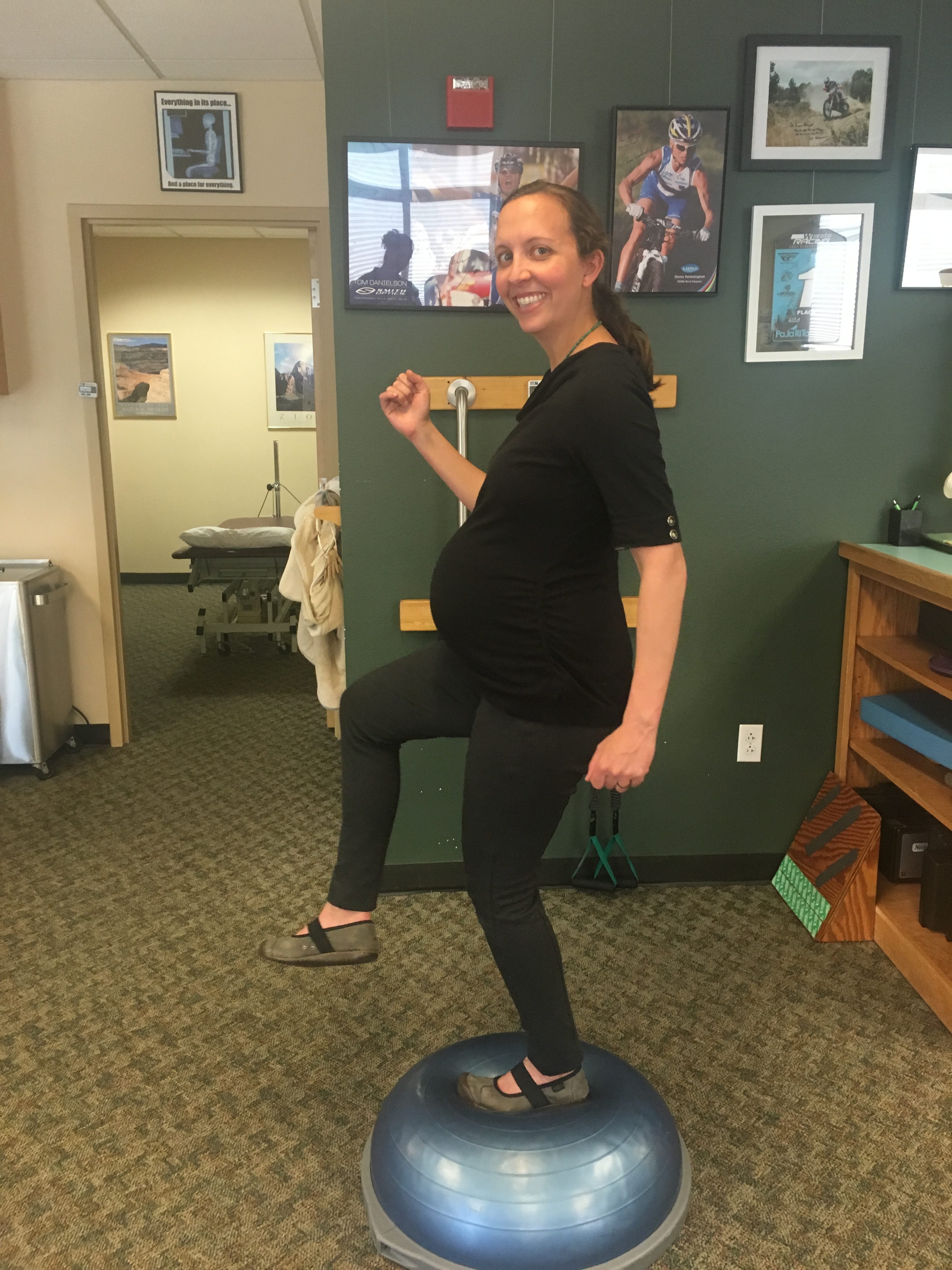In April, Janet Wells, PT, MSPT and I had the pleasure of presenting a free, informational talk regarding some common aches and pains related to pregnancy such as low back pain and pelvic floor dysfunction. The purpose of this talk was to inform the public that, despite people thinking that these common issues are “normal”, they are not necessarily supposed to occur and there are things that you can do about them! Here is a brief summary of the presentation so that folks can understand a little bit more about these common pregnancy-related issues.
- 24 to 90% of pregnant women report low back and/or pelvic girdle pain.1,2 That’s a very wide range, and there are a couple of things to consider when looking at those percentages. The definition of pregnancy-related low back is so varied which is likely one reason why the percentage is so broad. Also, there are probably many women out there who are not actually reporting the fact that they have pain to their providers, so this may skew the percentage as well.
- 5 to 37% of women report low back and/or pelvic girdle pain for months following delivery.1,2 That means that the pain doesn’t end once the baby comes out. Also, in some cases, women don’t experience any discomfort during pregnancy and then will begin to experience it once the baby is born. There are many reasons that this may happen, but one thing to remember is that the body is trying to return back to its “normal” positioning after stretching out for many months and, on top of that, there is the new demand of holding an infant nearly 24/7. Postural weakness may be to blame for many of the issues that happen in the post-partum stage.
- Low back pain and pelvic pain in pregnancy contribute to: difficulties in performing functional activities of daily living, increased sick leave, and sleep disturbance.1,2 Some people feel they can just “tough it out” when it comes to these issues despite the difficulties that they create in their life.
- Many women do not report their low back or pelvic pain during pregnancy to providers or seek treatment despite significant consequences!1,2 This is unfortunate, because there are many things that can be done regarding low back and/or pelvic pain during pregnancy, especially when looking at different physical therapy treatments. It is important for pregnant and post-partum women to make sure that they don’t just try to “live with it” when they are experiencing these types of pains and aches so that they do not get to the point where their function and quality of life are affected negatively after a temporary issue becomes chronic.

Janet and I are excited that we will continue to be able to use this presentation to teach women about their bodies and some of the resources that they can turn to in our community regarding their low back pain and pelvic floor dysfunction both during and after pregnancy. For those pregnant or recently pregnant women out there: please don’t shy away from finding help from a qualified professional in order to come up with a strategy for decreasing your pain and dysfunction. Call us today to set up an evaluation appointment if you are experiencing any pregnancy-related issues.
- Van Benten E, Pool J, Mens J, Pool-Goudzwaard A. Recommendations for Physical Therapists on the Treatment of Lumbopelvic Pain During Pregnancy: A Systematic Review. J Orthop Sports Phys Ther. 2014. 44;464-A15.
- Ferreira CWS, Alburquerque-Sendin F. Effectiveness of physical therapy for pregnancy-related low back and/or pelvic pain after delivery: A systematic review. Physiotherapy Theory and Practice. 2013. 29(6);419-431.

